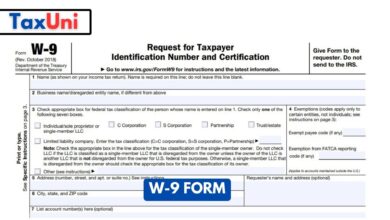Tuition and Fees Deduction
The IRS tuition and fees deduction is an above-the-line tax deduction for qualified education expenses. This article will help you understand how Tuition and Fees Deduction works.

The IRS Tuition and Fees Deduction is an above-the-line tax deduction that allows you to deduct up to $4,000 of qualified education expenses for yourself, your spouse, or a dependent. The deduction is available to those with incomes below a certain threshold of $880,000 or less for single filers and $160,000 or less for joint filers. The qualified education expenses include tuition and fees, textbooks, and equipment. However, other expenses such as room and board, transportation, health fees, student loans, and insurance are not eligible for the deduction.

How to Claim Tuition and Fees Deduction?
To claim the tuition and fees deduction, you must fill out Form 8917, which must be filed with your federal income tax return. You can find the form by going to the IRS website and searching for “form 8917”. You must enter your modified adjusted gross income (MAGI) and the amount of qualified educational expenses you paid. The qualified expenses must have been reported on Form 1098-T or a similar document. If you received any tax-free educational assistance, such as employer student loan repayment or grants, that must also be included in the total.RS Form 1098-T from your school. These forms show your qualifying expenses and report them to the IRS. The forms are not the same as the IRS Form W-2, which you get from your employer and must be attached to your tax return.
The tuition and fees deduction is limited by income ranges based on your filing status and modified adjusted gross income (MAGI). It is not available for married couples who file separate returns. In addition, it is not available for taxpayers who have been claimed as a dependent on someone else’s tax return or who are nonresident aliens.
The tuition and fees deduction is in addition to the American Opportunity Credit and Lifetime Learning Credit, so you cannot claim all three for the same year. Understanding the differences between a deduction and a credit is important because credits offset your taxes dollar-for-dollar, while deductions reduce your taxable income.

Tuition and Fees Deduction or AOTC and LLC?
Students and their families should know that the Lifetime Learning Credit and American Opportunity Tax Credit are more tax-friendly options than the Tuition and Fees Deduction. The credits are more tax-friendly because they offset your annual tax bill dollar-for-dollar, while the tuition and fees deduction only reduces your taxable income.
In addition, the credits are refundable, while the deduction is not. This makes the AOTC more appealing for lower-income families, while the LD is more beneficial for middle-income families. Students should carefully consider their circumstances and the pros and cons of each tax break to determine which is best for them. They should consult a certified public accountant or tax professional if they have any questions.





